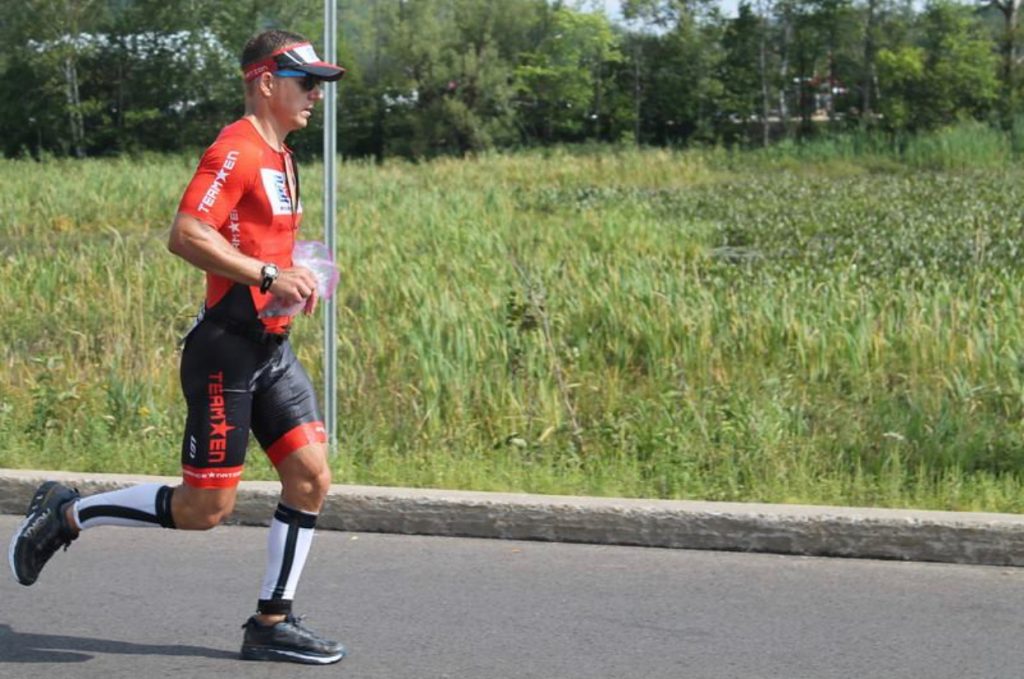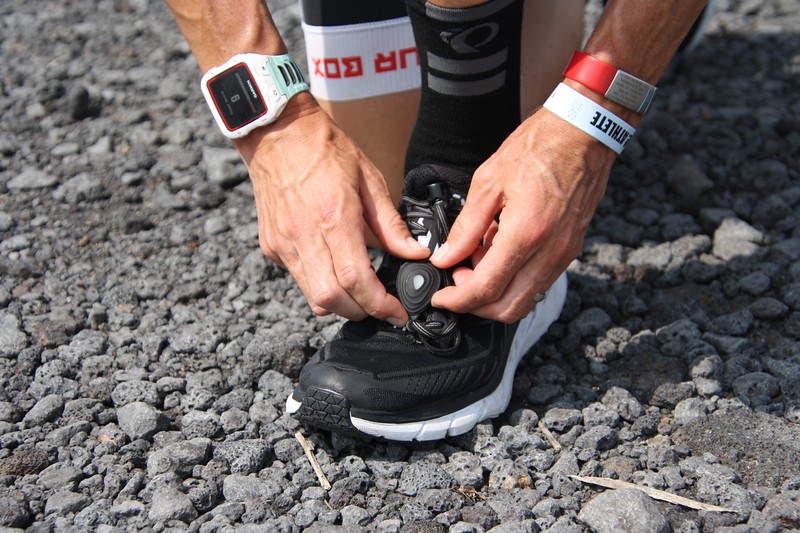
Runners and the Pace Problem
Runners have a pacing problem. At first, tracking run workouts purely by pace and heart rate makes sense, until you breakdown the reasoning behind the metrics. The key to faster running may come down to which metric runners are paying attention to. For years, running pace has been a critical element of a runner’s history. Until now. It’s time we break down running by pace, heart rate, and power and see which metric gives us the best results. Read on to learn more and to try our test workout combination so you can determine your potential for improvement.
Pro Tip: If you love shortcuts (no, not on race day) then jump to the end to see how you can use your Stryd power meter to instantly run like a veteran.
One Problem with Many Names
Fly and die. Crash and burn. The Fade. The Wall.
Call it what you want, there are many different ways to describe what it means to fail at meeting your race finish time goal. While some athletes are chasing dreams, even well-prepared runners struggle to run properly on race day.
After hundreds of run workouts, and countless steps, how it is possible for a runner to simply “not know” what holding a proper pace feels like?
The answer, it turns out, is surprisingly simple. And unpacking the answer can help you find a path to becoming a smarter and faster runner.
A Tale of Two Miles
Let’s visit two different runners training for a one-mile best effort race.
Runner One: Ricky lives at the top of the mountain, and he loves to run. Every day he runs from his house down the mountain. He loves to run fast and he has little to worry about as he can simply take the bus back home from the bottom.
Runner Two: Susie lives at the bottom of the mountain, and she loves to run too. Every day she runs up the mountain, pushing and grinding. She loves being called a “billy goat runner.” Susie takes the bus back home to the bottom to save her legs from all that downhill running.
Each athlete trains for a mile effort. Both athletes run a mile, and both set a personal best. Ricky logs an 8:00-minute mile headed downhill, and he’s pumped. Susie records an 8:00-minute mile headed uphill, and she’s ecstatic.
All the statistics seem to add up, however, the similarities end there.
An uphill mile takes significantly more work as the runner is fighting the incline and gravity. Not surprisingly, Susie’s mile data shows a super high cadence and heart rate as she churns up that hill.
The downhill mile has both decline and gravity on the runner’s side; the only real resistance is wind and perhaps the runner’s lack of economy. This is why Ricky’s mile had a lower cadence (longer strides) and lower heart rate (less resistance) than Susie’s.
(Or as you might be thinking, Susie is a beast and Ricky better hope that he doesn’t sign up for a flat one-mile race where he could cross paths with her.)
Most Runs Never Come Close to Being “Average”
Let’s take this one step further to look at how each of us run. After your local five mile loop, you will look at your total time and average pace. Five miles, in 45 minutes..those are nine-minute miles. Nice!
But of course, you aren’t a metronome. Not every mile was exactly 9:00 pace. However, mentally we round our running into a pace per mile that we use to tell a tale about that run. 9:00 per mile is your recovery pace, but what if your first mile was 10:00 and your last was 8:00…is that still a recovery run?
As your coach, I say no. An 8:00 mile is legit, and that was quite a bit of work. Whatever effects you intended to get from 9:00 miles was blown up by your finishing kick.
Runners use time and pace to normalize an effort. This process of generalizing the physical cost or training effect of a run by the average of all the inputs doesn’t allow us to capture all the work that was done.
This normalizing process is great for tracking miles run per week, or macro-level pacing. However, it doesn’t improve your ability to run a steady pace.
Why Do We Want to be Steady?
When it comes to endurance racing, the athlete who slows down the least wins.
In this scenario, efficiency is key. Every conserved heartbeat, every preserved calorie, every ounce of mental acuity is simply resources that can be allocated when the race really begins.
- Steady Means Better Long Runs: You’ll not only improve your ability to pace over time, but you’ll apply adequate stress towards the end of your run without over-exerting yourself. The best part? These runs are easier to recover from.
- Better Races: Just like those long runs, you’ll resist the urge to run too fast too soon. Instead of chasing the rabbits, you’ll be able to bide your time and ratchet up the pressure when it matters towards the end of the race.
- Better Recovery: This is perhaps the most important part of steady running — consistent and manageable fatigue. Your fitness is a function of your ability to process fatigue. While we don’t expect all of your runs to be steady, running steadily across the bulk of your week will help facilitate recovery!
- Increased Alignment of Work Done vs Perceived Exertion: To put it another way, you are eliminating the hidden costs of inconsistently paced running. You’ll know what the proper pace feels like. In fact, you’ll likely become able to achieve your desired pace without even having to look at your GPS enabled watch (or run power meter). This is the black belt of steady running!
If you’re ready, let’s take the test so you can see how much room you have to improve.

The Endurance Nation True Pacing Test (TPT)
This is a two-part test, completed on two separate days. It doesn’t require a power meter, but it will show you the difference between running Steady and running with Pace.
Test Equipment: Heart Rate Monitor and the intent to run a steady pace.
If you know your Heart Rate Zones, you can target Zone 2 (your endurance pace). If you don’t have Heart Rate zones, then use the following formula:
180 minus Your Age In Years. For a 40-year-old, this makes your Steady Test Heart Rate target 140 beats per minute.
Course: A five-mile (8km) run, ideally with some terrain changes in it. No mountains, please!
#1 Baseline Test Instructions: After a short 5- to 10-minute warm-up, start your test loop. It will take a few minutes for your Heart Rate to stabilize, so be patient. Once you are in the right zone, your job is to stay steady despite the changes in terrain. You’ll find that you need to adjust your paces just before you enter each terrain change as it will take time for the Heart Rate to respond (and you’ll want to stay ahead of it). When you are done, note your Time, Pace, and average Heart Rate.
Note: For longer runs, you’ll begin to experience Cardiac Drift, or “decoupling” where your Heart Rate will increase slightly over time as you tire, lose running economy, and fluids. For this reason, we’ve picked a moderate distance.
#2 Comparison Test Instructions: A day or two later – once you have recovered – it’s time to go back to the test. Using your Average Pace from your first test 5-mile run, your job is to run at that pace for the five-mile loop. After a short 5- to 10-minute warm-up, start your test loop. Focus on the pace and be sure to keep it as close to your goal pace as possible throughout the run. When you are done, note your Time, Pace and Average Heart Rate.
Outcomes
When you look at the results from both five-mile runs, you should see little to no difference in the run time or average pace. However, you will notice a difference of several heartbeats. The second run pace will have a greater aerobic cost for the same total work — somewhere in the range of an average heart rate that is four to eight beats higher for the same run.

Utilizing a running power meter
Whether you’ve taken True Pacing Test (TPR) or opted for the shortcut, it’s time to talk about how using a running power meter can help you improve your race day running.
A power meter essentially captures the real-time work your body is doing to move you down the road. A heart rate monitor measures the physical cost of doing work (in heartbeats), not the actual work itself. Heartbeats don’t actually move you down the road after all, your legs do!
In other words, a heart rate monitor has a “lag” between the work done (by your muscles) and the effect of that work expressing itself with an increased (or decreased) heart rate. By the time you see your elevated heart rate, it’s almost too late. The damage is done.
By quantifying the work associated with running, the Stryd power meter gives you actionable data in real time. Running with a power meter will show you:
- How you do less work running downhill
- The true cost of running into a headwind
- Just how much running uphill can cost you valuable energy.
Beyond that, there are other significant metrics that can make you a fitter and stronger runner, but we’ll save those for another article.
The New Version of Steady
Back to your local run loop, this time with a Stryd Run Powermeter on your shoe. Rather than chasing a pace number, your focus now is now on keeping your run watts in a nice tight range. As you head up hills, your pace slows to keep the watts consistent. And as you crest the hill and head into the downhill section, you begin pushing harder so that the watts don’t drop off.
Executed in almost the polar opposite manner to your “old” running style, you will find that the rhythm and challenge of being steady are engaging and somehow easier. After you roll in with your steady power number and your 8-minute mile pace, a review of your power data confirms what you felt. It was an easier run as your heart rate and power numbers remained flat. The variable this time: your pace. It fluctuates to prevent your watts from surging (or dropping).
With your newfound speed through steady running, you’ll be able to run longer with a lower aerobic cost. You’ll be able to reduce the cost of running long, especially those later miles. Not only will you unlock better recovery across your week but you’ll even have more energy for the sessions when you actually want to run faster to create new fitness.
Good luck in your running endeavors and be sure to tell us about your True Pacing Test results on our Facebook page or tag us on Instagram.
Endurance Nation is the world’s largest, fastest online triathlon coaching group with more than 750 members across the globe. Be sure to check us out at EnduranceNation.us, or get started on your path to success EnduranceNation.us. Endurance Nation: Work Hard, Get Smart, Go Fast!



Leave a Reply